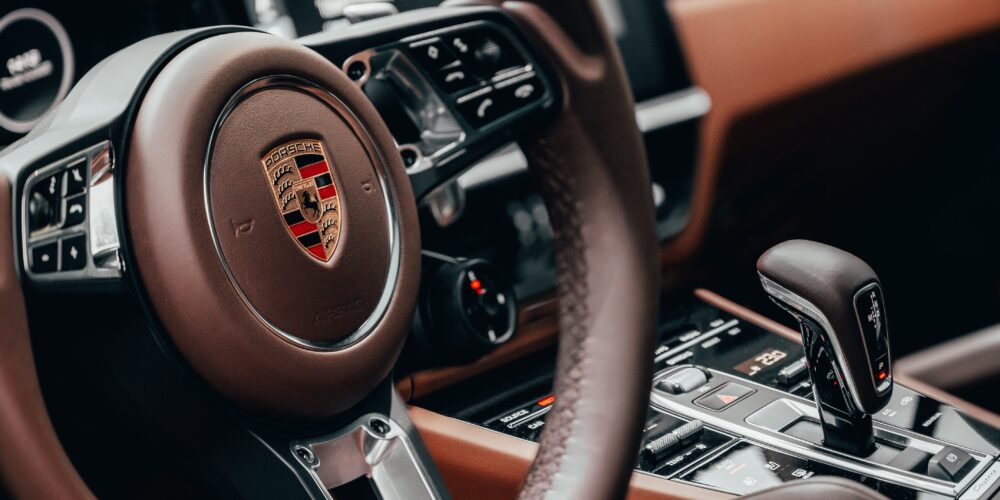As the automotive world develops, so too does the technology available within it and dual-clutch transmissions (DCT) is one such technology. They are becoming more and more powerful and common in modern cars today, offering improved performance and efficiency, particularly in more powerful or performance-oriented vehicles. If you are looking to buy a car with a DCT transmission but are already driving an automatic, you might be wondering what the difference is and whether it’s worth making the switch. Here, we’re exploring DCT transmissionsand how they stand up against Automatic alternatives, and whether you should make the switch.
What Is a DCT Transmission?
DCT transmissions, or Dual Clutch Transmissions, are a system similar to an automatic transmission but one that utilises two individual clutches. Having two clutches makes it not only smoother to switch up through the gears, but faster too – a six-speed gearbox, for example, usually has the first clutch handling gears 1, 3 and 5, while the second clutch handles 2, 4 and 6. It effectively works like two separate manual transmissions within the same housing, offering a much faster shift by pre-selecting the next gear on the second clutch.
DCT systems might operate on a manual basis, however, it is all automated, meaning the driving style is much like an automatic vehicle with the added benefits of the manual shift. Most cars with DCT will also have a manual option, meaning you can use paddle controls for manual shifting rather than the standard automatic mode.
How Is It Different From An Automatic?
The core and more important difference between DCT and standard automatic gearboxes rests in the fact that a DCT involves two clutches, and an automatic uses only one. DCTs don’t typically engage themselves in the same way as an automatic transmission, which would use torque converters, and as a result drives more like a manual car – think hill rollbacks, gear control etc. Having the two clutches, however, does mean that a DCT transmission can change up or down through the gears rapidly in comparison, offering a much smoother driving experience with the added benefit of higher performance and a more responsive vehicle.
What Benefits Are There To DCT?
As with any automotive technology, DCTs come with their pros and cons depending on who you are, how you drive and what it is that you’re wanting out of your vehicle. Some of the key benefits DCTs offer include:
- Improved Acceleration – DCTs can often change gear in as little as 0.1 seconds by pre-selecting gears. This means that you can accelerate much faster than in a typical manual or automatic vehicle. This makes it ideal for performance-car lovers.
- Smooth Gear Changes – The dual-clutch crossed with the computers make the change between gears not just fast, but direct and smooth too. Manual transmissions can suffer from jolty shifts or ‘shift shock’, whih is pretty much eliminated with DCT cars.
- Power – Drivers can easily shift between automatic functions or manual control depending on their needs, offering access to different power levels and control to improve the overall driving experience.
- Efficiency – Reports suggest that DCTs typically offer a 6% improved efficiency in both fuel and acceleration, offering a much more efficient vehicle to drive.
What About Issues?
DCT gearboxes might make driving a smoother experience, but they do come with a few complaints worth noting before you make the switch:
- More Servicing and Maintenance – Due to the complexities of the DCT system, there is a higher maintenance need than a traditional automatic or manual system. You need to keep on top of servicing to ensure that the system runs smoothly. They are more sensitive to problems, so it’s important to book a DCT service regularly.
- Clutch Wear and Complex Repairs – Unlike automatic transmissions, DCTs come with the same clutch wear issues as manual cars, however due to the unique dual-clutch system, they are also more complex, and often more costly, to repair.
- Drive Differently To Automatic – Automatic cars tend to do most of the work for you, but with DCT, you do still have to think about neutral gears, hill starts and more.
Dual-Clutch systems, whether it’s a DSG gearbox, a Powershift system or even a CVT alternative, all offer a unique drive experience but require more regular maintenance and expert repair. For both, we are on hand to help. Simply get in touch with our team to book your vehicle in with us.

